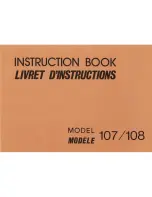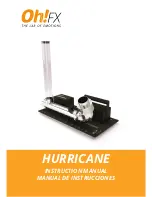
Replacing the Needle
GE
T
T
IN
G RE
A
D
Y
25
1
■
Thread and needle number
The lower the thread number is, the heavier the thread;
the higher the needle number, the larger the needle.
■
Embroidery needles
It is recommended to use a 75/11 home sewing machine
needle. However, if the machine is not stitching well
when embroidering on heavy weight fabric, please try a
90/14 needle.
Checking the needle
Before using the needle, place the flat side of the needle on a
flat surface and check that the distance between the needle
and the flat surface is even.
Replacing the needle
Use the screwdriver and a new needle that has been
determined to be straight according to the instructions in
“Checking the needle” on page 25.
a
Press
(Needle position button) once or twice to
raise the needle.
b
Place fabric or paper under the presser foot to cover
the hole in the needle plate to prevent the needle from
falling into the machine.
c
Press .
• When the message [OK to automatically lower the
presser foot?] appears on the LCD screen, press
to continue.
The screen changes, and all keys and operation
buttons are locked (except
).
d
Follow steps
c
to
d
“Replacing the embroidery
foot” on page 52 for removing the presser foot.
e
Hold the needle with your left hand, and then use a
screwdriver to turn the needle clamp screw toward
you (counterclockwise) to remove the needle.
• Do not apply a strong force when loosening or
tightening the needle clamp screw, otherwise certain
parts of the machine may be damaged.
f
With the flat side of the needle toward the rear of the
machine, insert the new needle until it touches the
needle stopper. Using the screwdriver tighten the
needle clamp screw by turning it clockwise.
Replacing the Needle
CAUTION
• Only use recommended home sewing machine
needles. Use of any other needle may bend the
needle or damage the machine.
• Never use bent needles. Bent needles can
easily break, possibly resulting in injuries.
1
Flat side
2
Needle type marking
3
Flat surface
4
Even
5
Not even
Note
• The machine needles are consumables. Replace
the needle in cases such as those described
below.
- If an unusual sound is produced when the needle
enters the fabric. (The tip of the needle may be
broken or dull.)
- If stitches are skipped. (The needle may be bent.)
1
2
c
d
e
CAUTION
• When replacing the needle, be sure that you
have pressed
on the operation panel to
lock all keys and buttons, otherwise injuries
may occur if the “Start/Stop” button or any
other button is pressed and the machine starts.
1
Needle stopper
1
















































